Study on Noise-Reduction Mechanism and Structural-Parameter Optimization of Ventilated Acoustic Metamaterial Labyrinth Plate
Abstract
:1. Introduction
2. Theory Model
2.1. Analytical Model
2.2. Numerical Model
3. Validation and Analysis
4. Optimizations for Structural Parameters
4.1. Objective Function and Constraints
4.2. Method and Process
4.3. Optimization Results
5. Conclusions
- (1)
- The STL and complex frequency planes of the WU were obtained by solving an analytical model based on the impedance series principle and a numerical computational model. The results show that the thermo-viscous losses caused the structure to generate a frequency shift and a reduction in the resonance frequency. At the same time, the maximum value of the STL was changed from an infinite value to a predictable value. Meanwhile, the thermo-viscous loss was responsible for the sound absorption coefficient.
- (2)
- By calculating the impedance at the entrance of the waveguide cell, it is found that the impedance was perfectly matched when the labyrinth cell was in resonance mode. When thermo-viscous losses were introduced, the impedance matching state was affected and presented an imperfect match.
- (3)
- When the actual noise frequency was 378.5 Hz, the optimized structural parameters were l1* = 213.59 mm, l2* = 42 mm, and a* = 31.8 mm, with a resonance frequency of 378.9 Hz. It was verified that the structural parameter combinations could be effectively optimized through the BP–ISSA optimization model to improve the ventilation capacity of the LC.
Author Contributions
Funding
Institutional Review Board Statement
Informed Consent Statement
Data Availability Statement
Acknowledgments
Conflicts of Interest
References
- Pendry, J.B.; Holden, A.J.; Stewart, W.J.; Youngs, I.I. Extremely Low Frequency Plasmons in Metallic Mesostructures. Phys. Rev. Lett. 1996, 76, 4773–4776. [Google Scholar] [CrossRef] [PubMed]
- Pendry, J.B.; Holden, A.J.; Robbins, D.J.; Stewart, W.J. Magnetism from Conductors, and Enhanced Non-linear Phenomena. IEEE Trans. Microw. Theory 1999, 47, 2075–2084. [Google Scholar] [CrossRef]
- Shelby, R.A.; Smith, D.R.; Schultz, S. Experimental Verification of a Negative Index of Refraction. Science 2001, 292, 77–79. [Google Scholar] [CrossRef]
- Pendry, J.B. Negative Refraction Makes a Perfect Lens. Phys. Rev. Lett. 2000, 85, 3966–3969. [Google Scholar] [CrossRef] [PubMed]
- Soukoulis, C.M.; Linden, S.; Wegener, M. Negative Refractive Index at Optical Wavelengths. Science 2007, 315, 47–49. [Google Scholar] [CrossRef]
- Engheta, N. An idea for thin subwavelength cavity resonators using metamaterials with negative permittivity and permeability. IEEE Antenn. Wirel. Pract. 2002, 1, 10–13. [Google Scholar] [CrossRef]
- Ziolkowski, R.W. Design, fabrication, and testing of double negative metamaterials. IEEE Antenn. Wirel. Pract. 2003, 51, 1516–1529. [Google Scholar] [CrossRef]
- Liu, H.; Zhang, Q.; Zhang, K.; Hu, G.K.; Duan, H.L. Designing 3D Digital Metamaterial for Elastic Waves: From Elastic Wave Polarizer to Vibration Control. Adv. Sci. 2019, 6, 1900401. [Google Scholar] [CrossRef]
- Song, H.; Ding, X.D.; Cui, Z.X.; Hu, H.H. Research Progress and Development Trends of Acoustic Metamaterials. Molecules 2021, 26, 4018. [Google Scholar] [CrossRef]
- Kumar, S.; Lee, H.P. The Present and Future Role of Acoustic Metamaterials for Architectural and Urban Noise Mitigations. Acoustics 2019, 1, 590–607. [Google Scholar] [CrossRef]
- Cummer, S.A.; Christensen, J.; Alù, A. Controlling sound with acoustic metamaterials. Nat. Rev. Mater. 2016, 1, 16001. [Google Scholar] [CrossRef]
- Guild, M.D.; Alù, A.; Haberman, M.R. Cancellation of acoustic scattering from an elastic sphere. J. Acoust. Soc. Am. 2011, 129, 1355–1365. [Google Scholar] [CrossRef] [PubMed]
- Iannace, G.; Amadasi, G.; Bevilacqua, A.; Cairoli, M.; Trematerra, A. Resonant Acoustic Metamaterials. Appl. Sci. 2024, 14, 5080. [Google Scholar] [CrossRef]
- Nguyen, H.; Wu, Q.; Xu, X.; Chen, H.; Tracy, S.; Huang, G. Broadband acoustic silencer with ventilation based on slit-type Helmholtz resonators. Appl. Phys. Lett. 2020, 117, 134103. [Google Scholar] [CrossRef]
- Lan, J.; Li, Y.F.; Yu, H.Y.; Li, B.S.; Liu, X.Z. Nonlinear effects in acoustic metamaterial based on a cylindrical pipe with ordered Helmholtz resonators. Phys. Lett. A 2017, 381, 1111–1117. [Google Scholar] [CrossRef]
- Kim, S.H.; Lee, S.H. Air transparent soundproof window. AIP Adv. 2014, 4, 117123. [Google Scholar] [CrossRef]
- Huang, S.Q.; Lin, Y.B.; Tang, W.J.; Deng, R.F.; He, Q.B.; Gu, F.S.; Ball, A.D. Sensing with sound enhanced acoustic metamaterials for fault diagnosis. Front. Phys. 2022, 10, 1207895. [Google Scholar] [CrossRef]
- Kumar, S.; Lee, H.P. Recent advances in acoustic metamaterials for simultaneous sound attenuation and air ventilation performances. Crystals 2020, 10, 686. [Google Scholar] [CrossRef]
- Xiang, X.; Wu, X.X.; Li, X.; Wu, P.; He, H.; Mu, Q.J.; Wang, S.X.; Huang, Y.Z.; Wen, W.J. Ultra-open ventilated metamaterial absorbers for sound-silencing applications in environment with free air flows. Extrem. Mech. Lett. 2020, 39, 100786. [Google Scholar] [CrossRef]
- Trematerra, A.; Bevilacqua, A.; Iannace, G. Noise Control in Air Mechanical Ventilation Systems with Three-Dimensional Metamaterials. Appl. Sci. 2023, 13, 1650. [Google Scholar] [CrossRef]
- Fusaro, G.; Yu, X.; Kang, J.; Cui, F. Development of metacage for noise control and natural ventilation in a window system. Appl. Acoust. 2020, 170, 107510. [Google Scholar] [CrossRef]
- Ghaffarivardavagh, R.; Nikolajczyk, J.; Anderson, S.; Zhang, X. Ultra-open acoustic metamaterial silencer based on Fano-like interference. Phys. Rev. B 2019, 99, 024302. [Google Scholar] [CrossRef]
- Sun, M.; Fang, X.S.; Mao, D.X.; Wang, X.; Li, Y. Broadband Acoustic Ventilation Barriers. Phys. Rev. Appl. 2020, 13, 044028. [Google Scholar] [CrossRef]
- Xiao, Z.Q.; Gao, P.L.; He, X.; Qu, Y.G.; Wu, L.Z. Multifunctional acoustic metamaterial for air ventilation, broadband sound insulation and switchable transmission. J. Phys. D Appl. Phys. 2023, 56, 044006. [Google Scholar] [CrossRef]
- Kumar, S.; Lee, H.P. Labyrinthine acoustic metastructures enabling broadband sound absorption and ventilation. Appl. Phys. Lett. 2020, 116, 134103. [Google Scholar] [CrossRef]
- Laly, Z.; Atalla, N.; Meslioui, S.A. Acoustical modeling of micro-perforated panel at high sound pressure levels using equivalent fluid approach. J. Sound Vib. 2018, 427, 134–158. [Google Scholar] [CrossRef]
- Catapane, G.; Petrone, G.; Robin, O.; Verdière, K. Coiled quarter wavelength resonators for low-frequency sound absorption under plane wave and diffuse acoustic field excitations. Appl. Acoust. 2023, 209, 109402. [Google Scholar] [CrossRef]
- Atalla, N.; Sgard, F. Modeling of perforated plates and screens using rigid frame porous models. J. Sound Vib. 2007, 303, 195–208. [Google Scholar] [CrossRef]
- Okuzono, T.; Nitta, T.; Sakagami, K. Note on microperforated panel model using equivalent-fluid-based absorption elements. Acoust. Sci. Technol. 2019, 40, 221–224. [Google Scholar] [CrossRef]
- Chevillotte, F. Controlling sound absorption by an upstream resistive layer. Appl. Acoust. 2012, 73, 56–60. [Google Scholar] [CrossRef]
- Di Giulio, E.; Perrot, C.; Dragonetti, R. Transport parameters for sound propagation in air saturated motionless porous materials: A review. Int. J. Heat Fluid Flow 2024, 108, 109426. [Google Scholar] [CrossRef]
- Magnani, A.; Marescotti, C.; Pompoli, F. Acoustic absorption modeling of single and multiple coiled-up resonators. Appl. Acoust. 2022, 186, 108504. [Google Scholar] [CrossRef]
- Chen, C.; Du, Z.; Hu, G.; Yang, J. A low-frequency sound absorbing material with subwavelength thickness. Appl. Phys. Lett. 2017, 110, 221903. [Google Scholar] [CrossRef]
- Zhang, D.C.; Su, X.M.; Sun, Y.M.; Chen, C.Z.; Sun, X.M. Mechanism Analysis and Experiment Study for Wire Mesh-Assisted Ventilated Acoustic Metamaterials Based on the Acoustic Analytical Model and Numerical Acoustic-Flow Coupling Model. J. Vib. Eng. Technol. 2024, 12, 6649–6663. [Google Scholar] [CrossRef]
- Jena, D.P.; Dandsena, J.; Jayakumari, V.G. Demonstration of effective acoustic properties of different configurations of Helmholtz resonators. Appl. Acoust. 2019, 155, 371–382. [Google Scholar] [CrossRef]
- Xue, J.; Shen, B. A novel swarm intelligence optimization approach: Sparrow search algorithm. Syst. Sci. Control Eng. 2020, 8, 22–34. [Google Scholar] [CrossRef]
- Yan, S.Q.; Liu, W.D.; Li, X.Q.; Yang, P.; Wu, F.X.; Yan, Z. Comparative Study and Improvement Analysis of Sparrow Search Algorithm. Wirel. Commun. Mob. Com. 2022, 2022, 4882521. [Google Scholar] [CrossRef]
- Zhao, J.G.; Zhu, T.Y.; Qiu, Z.C.; Li, T.; Wang, G.L.; Li, Z.W.; Du, H.L. Hyperspectral prediction of pigment content in tomato leaves based on logistic-optimized sparrow search algorithm and back propagation neural network. J. Agric. Eng. 2023, 54, 1528. [Google Scholar] [CrossRef]
- Hu, L.W.; Wang, D.H. Research and Application of an Improved Sparrow Search Algorithm. Appl. Sci. 2024, 14, 3460. [Google Scholar] [CrossRef]
- Zhang, H.; Yang, J.; Qin, T.; Fan, Y.C.; Li, Z.T.; Wei, W. A Multi-Strategy Improved Sparrow Search Algorithm for Solving the Node Localization Problem in Heterogeneous Wireless Sensor Networks. Appl. Sci. 2022, 12, 5080. [Google Scholar] [CrossRef]
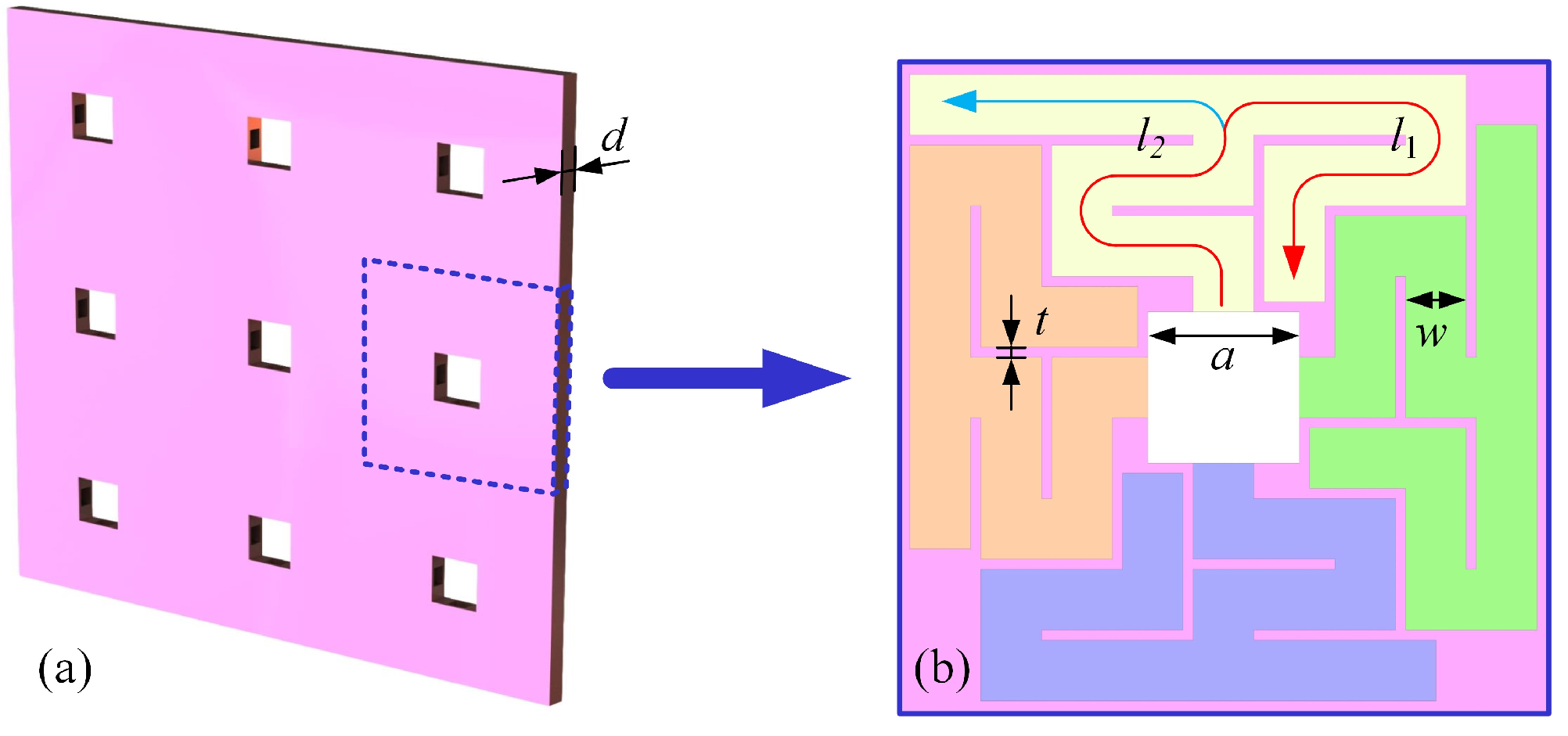
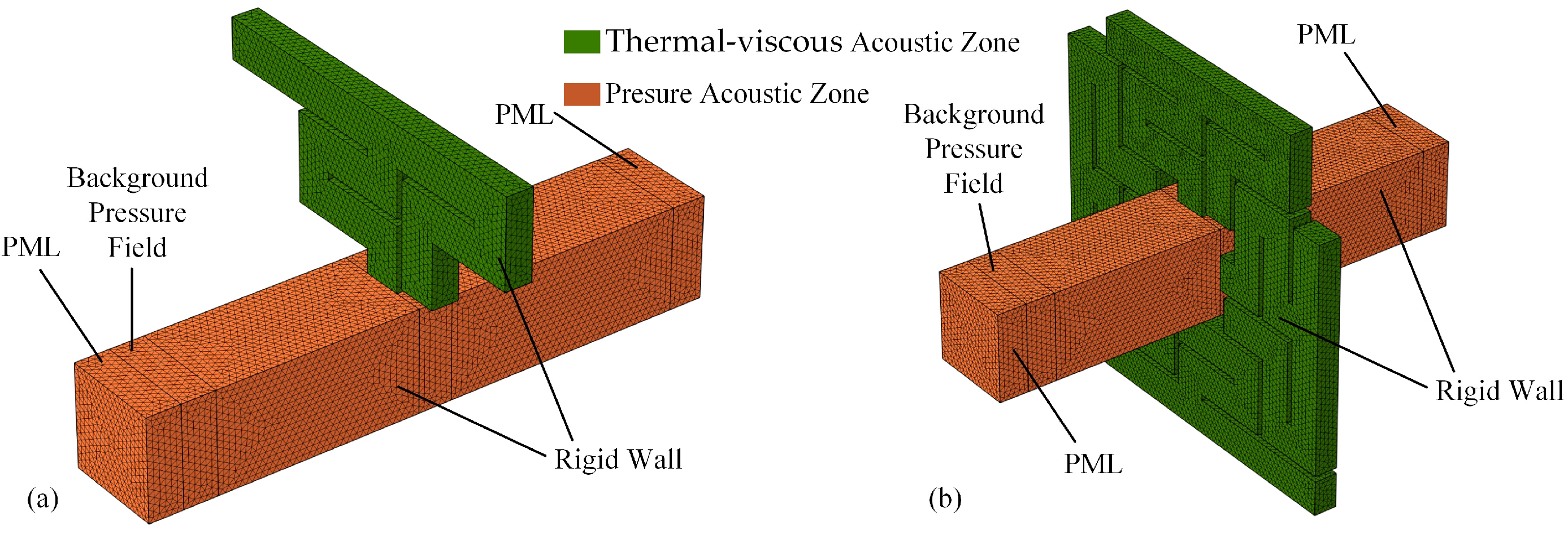


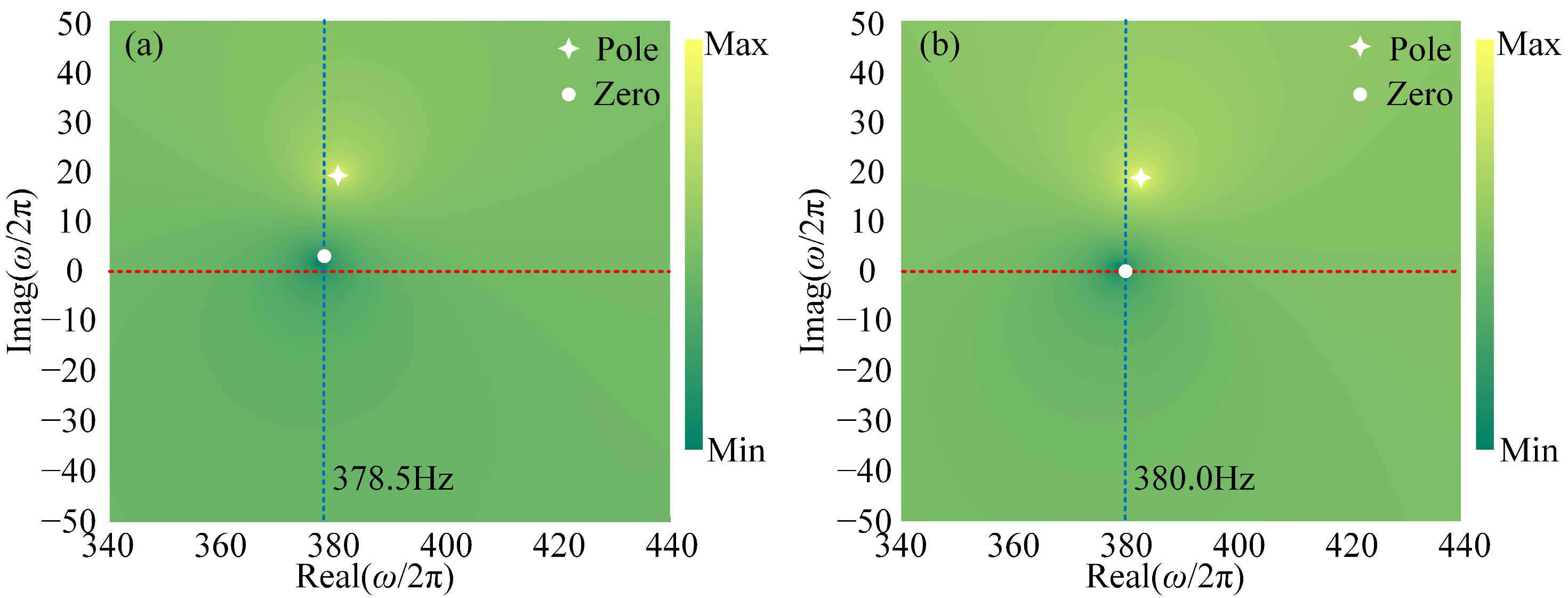




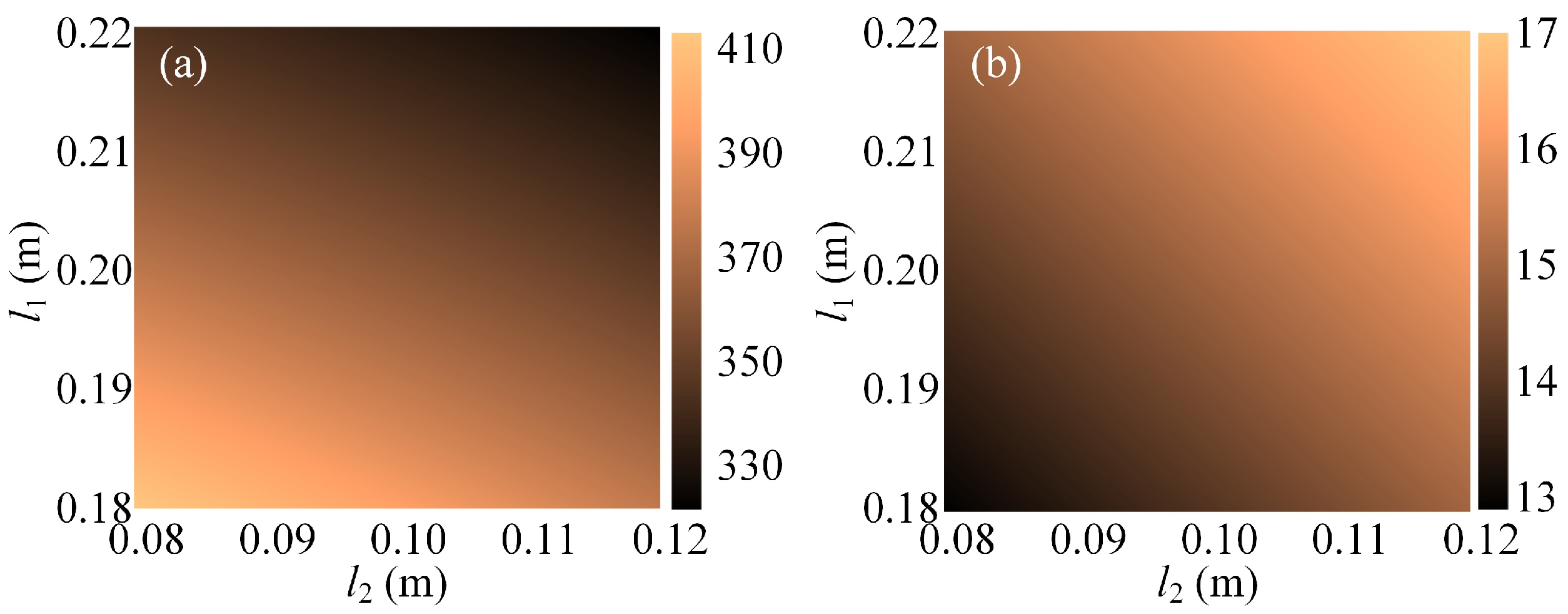
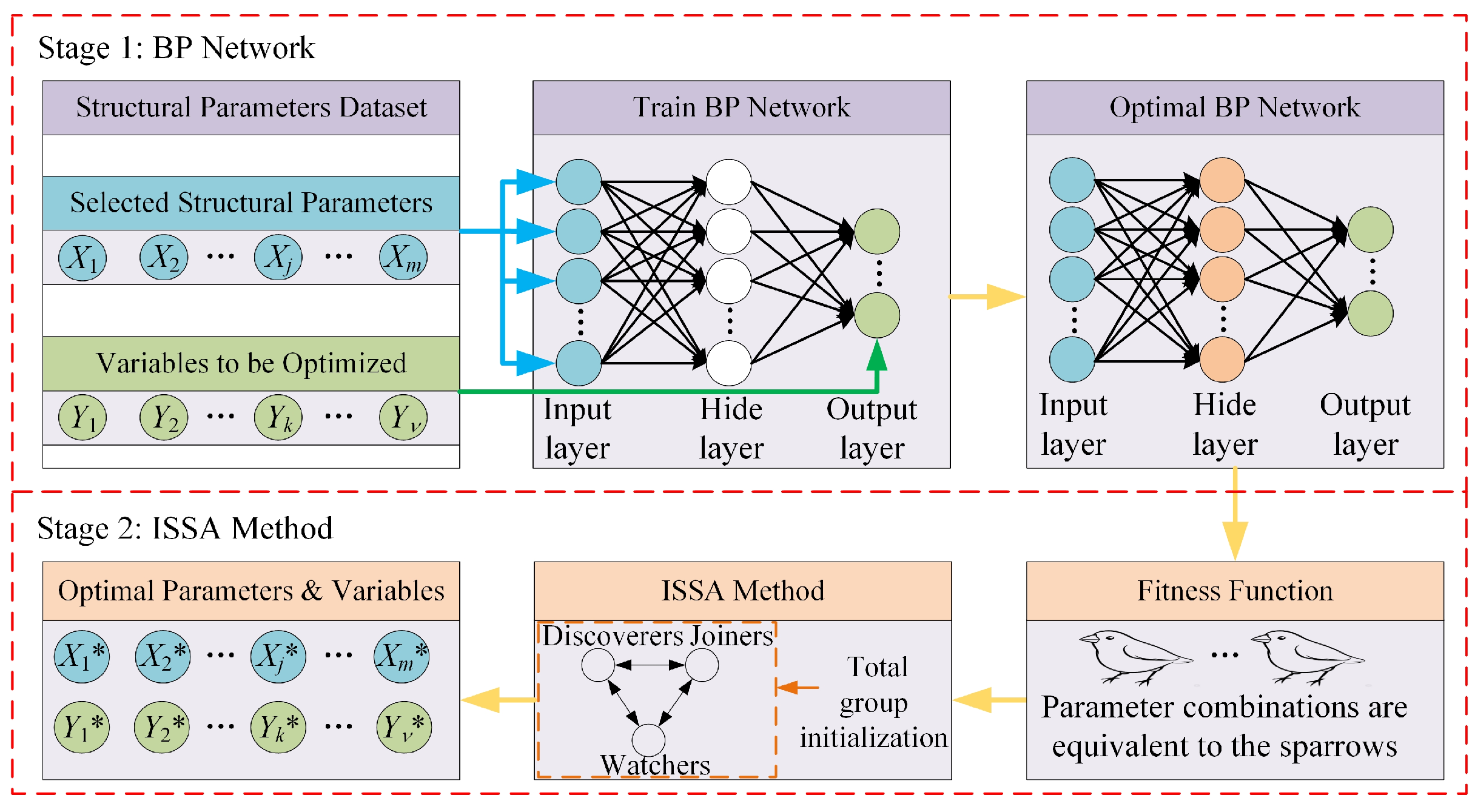
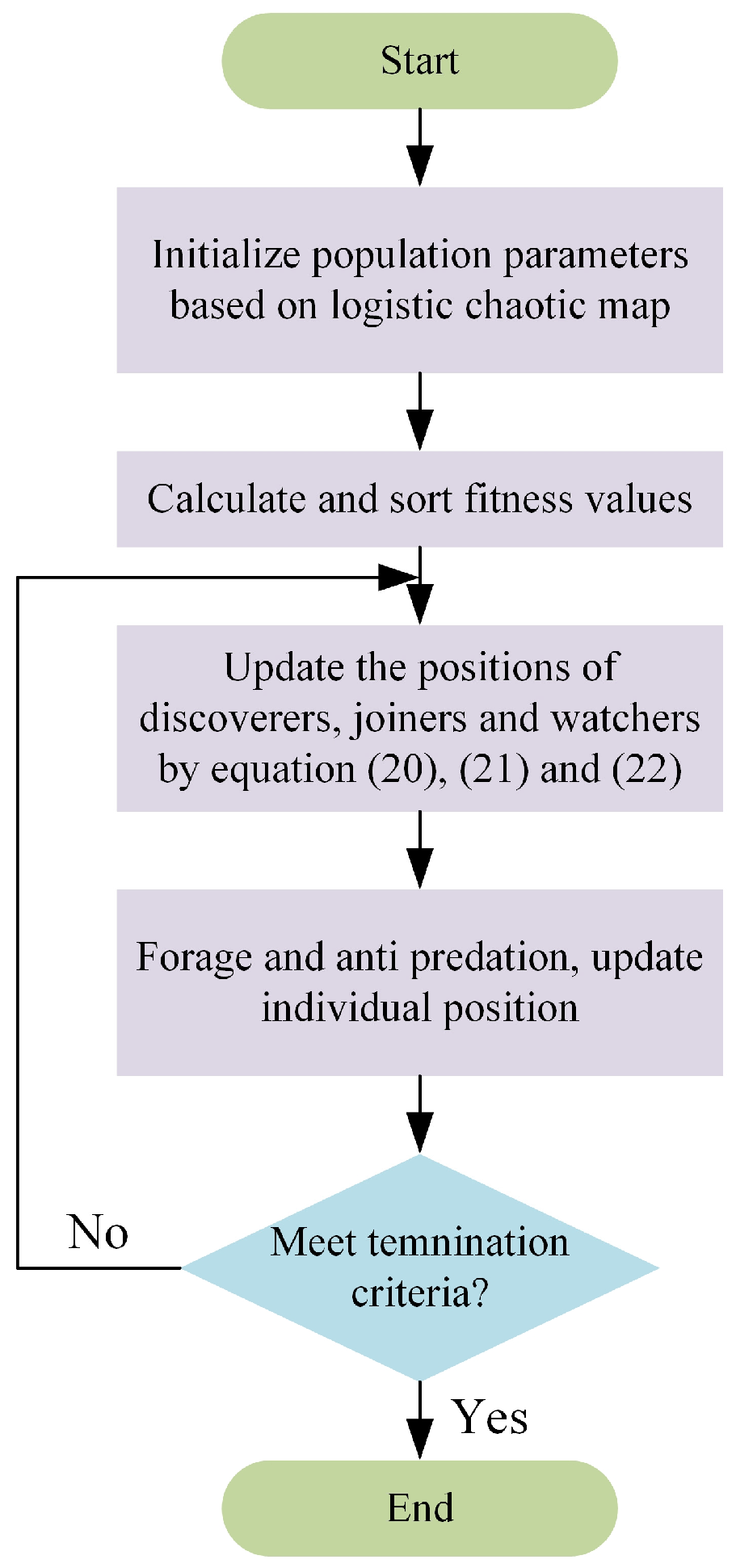


| Parameters | Value |
|---|---|
| Bulk viscosity/(Pa·s) | 1.11 × 10−5 |
| Dynamic viscosity/(Pa·s) | 1.85 × 10−5 |
| Density/(kg·m−3) | 1.21 |
| Thermal conductivity/(W·m−1·K−1) | 2.63 × 10−2 |
| Heat capacity at constant pressure/(J·kg−1·K−1) | 1005.70 |
| Ratio of specific heats | 1.40 |
| Speed of sound/(m·s−1) | 343.00 |
| Parameters | d (mm) | t (mm) | a (mm) | w (mm) | l1 (mm) | l2 (mm) |
|---|---|---|---|---|---|---|
| Case 1 | 12.0 | 2.0 | 30.0 | 12.0 | 208 | 56 |
| Case 2 | 12.0 | 2.0 | 25.0 | 12.0 | 193 | 50 |
| Case 3 | 12.0 | 2.0 | 30.0 | 12.0 | 223 | 44 |
| ub1 (mm) | ub2 (mm) | ub3 (mm) | lb1 (mm) | lb2 (mm) | lb2 (mm) |
|---|---|---|---|---|---|
| 220 | 120 | 35 | 180 | 80 | 5 |
Disclaimer/Publisher’s Note: The statements, opinions and data contained in all publications are solely those of the individual author(s) and contributor(s) and not of MDPI and/or the editor(s). MDPI and/or the editor(s) disclaim responsibility for any injury to people or property resulting from any ideas, methods, instructions or products referred to in the content. |
© 2024 by the authors. Licensee MDPI, Basel, Switzerland. This article is an open access article distributed under the terms and conditions of the Creative Commons Attribution (CC BY) license (https://creativecommons.org/licenses/by/4.0/).
Share and Cite
Zhang, D.; Tang, W.; Sun, Y.; Chen, C.; Su, X.; Sun, X. Study on Noise-Reduction Mechanism and Structural-Parameter Optimization of Ventilated Acoustic Metamaterial Labyrinth Plate. Appl. Sci. 2024, 14, 7865. https://doi.org/10.3390/app14177865
Zhang D, Tang W, Sun Y, Chen C, Su X, Sun X. Study on Noise-Reduction Mechanism and Structural-Parameter Optimization of Ventilated Acoustic Metamaterial Labyrinth Plate. Applied Sciences. 2024; 14(17):7865. https://doi.org/10.3390/app14177865
Chicago/Turabian StyleZhang, Dacheng, Wanru Tang, Yumeng Sun, Changzheng Chen, Xiaoming Su, and Xianming Sun. 2024. "Study on Noise-Reduction Mechanism and Structural-Parameter Optimization of Ventilated Acoustic Metamaterial Labyrinth Plate" Applied Sciences 14, no. 17: 7865. https://doi.org/10.3390/app14177865





